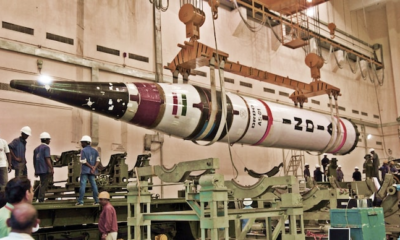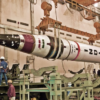Indian Astronaut to Test Cyanobacteria for Gaganyaan Life Support System
Indian astronaut Group Captain Shubhanshu Shukla will conduct a groundbreaking experiment in May 2025 as part of the Axiom Mission-4 (Ax-4), a collaboration between ISRO, NASA, and the European Space Agency (ESA). During his 14-day mission aboard the International Space Station (ISS), Shukla will test two strains of cyanobacteria—Chroococcidiopsis and another photosynthetic strain—to assess their potential for sustaining life support systems in space, particularly for India’s Gaganyaan program, which aims to send humans into orbit by 2026.
The Importance of Cyanobacteria in Space
Cyanobacteria, often referred to as blue-green algae, are unique organisms capable of photosynthesis, producing oxygen from carbon dioxide and light. This ability makes them a prime candidate for closed-loop life support systems that can recycle carbon dioxide and produce oxygen—critical functions for long-duration space missions.
In the context of Gaganyaan, which aims to establish a sustainable crewed mission, ensuring that astronauts have a reliable supply of oxygen and that carbon dioxide is efficiently managed will be a significant challenge. Cyanobacteria may provide a natural solution, offering a way to produce oxygen and even organic compounds like food or medicines using minimal resources. This research could pave the way for autonomous, self-sustaining systems that do not rely solely on heavy and expensive cargo from Earth.
Shukla’s Role and Experiment Goals
The core aim of Shukla’s experiment will be to study the growth rates, biochemical activity, and cellular responses of the two strains of cyanobacteria in space conditions, particularly in microgravity. This is vital because the conditions aboard spacecraft differ significantly from those on Earth. The microgravity environment of space can alter how organisms grow and function, making it necessary to understand how cyanobacteria will adapt and continue to produce oxygen and organic matter in these unfamiliar conditions.
The Ax-4 study will involve comparing the performance of cyanobacteria in space to ground-based controls. In particular, researchers will analyze their genomic stability, which refers to their ability to maintain their genetic integrity and not succumb to the cosmic radiation and other harsh environmental factors in space. Previous experiments on the ISS have shown cyanobacteria’s resilience to cosmic radiation and their remarkable ability to repair DNA damage caused by the space environment, which makes them promising candidates for space missions.
How the Research Will Benefit India’s Space Program
The implications of Shukla’s cyanobacteria experiment for India’s Gaganyaan mission are far-reaching. India has committed to sending its first crewed space mission to orbit in 2026, and the ability to manage life support in deep space will be critical. With the long duration of such missions, microbial-based life support systems—including the use of cyanobacteria—could provide sustainable and cost-effective solutions. Cyanobacteria’s potential to produce oxygen, recycle carbon dioxide, and generate organic compounds is key to ensuring that astronauts can survive and thrive on long-duration space missions, including those destined for the Moon and Mars.
This research aligns with ISRO’s broader strategy to develop robust space biotechnology, which could have applications not just for the Gaganyaan mission, but for future lunar and Martian missions. The experiment could also potentially contribute to biomanufacturing in space, such as creating medicines or materials needed by astronauts.
Additionally, the study of cyanobacteria’s ability to integrate with extraterrestrial regolith (the dust and soil found on the Moon or Mars) is being explored for future habitats on other planets. This could be a game-changer in space exploration, enabling the creation of self-sustaining ecosystems beyond Earth.
Beyond Cyanobacteria: Shukla’s Comprehensive Space Research
Shukla’s mission won’t be limited to just cyanobacteria. Alongside this study, he will also conduct six other experiments, which include research on tardigrades, also known as “water bears,” and space agriculture. These experiments will expand India’s understanding of how life forms and plants behave in the space environment and how they might be harnessed to support human life in deep space.
Furthermore, ISRO has been conducting experiments on microbial behavior in space through its MANAS pico-satellite, which is testing the soil bacterium Sporosarcina pasteurii. This research is a part of India’s broader efforts to develop microbial solutions for long-duration space travel and extraterrestrial habitation.
Future Implications and Private Sector Involvement
The results of the Ax-4 mission could provide a critical foundation for the design of compact, self-sustaining life support systems for future space missions. Growing bacteria in space isn’t just about life support—it could also be a step toward manufacturing pharmaceuticals or even 3D-printing organs in microgravity.
With private players like Skyroot Aerospace joining the space sector, India is positioning itself as a leader in space biotechnology. This involvement from the private sector will allow India to push the boundaries of space research, particularly in biotechnology, where growing microbial life in space could one day support human deep-space exploration.
Conclusion
Shubhanshu Shukla’s experiment is a foundational leap for India’s space ambitions. By studying cyanobacteria’s adaptability to space conditions, India is not only preparing for Gaganyaan’s life support needs but also building a robust platform for long-duration missions that could extend to the Moon and Mars. This experiment, along with other cutting-edge space research, places India at the forefront of space biotechnology and human exploration beyond Earth.
IT.




























